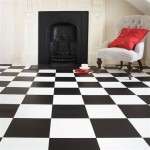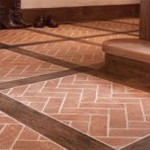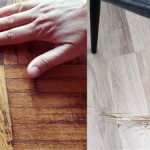How To Stain Hardwood Floors For A Professional Finish
Staining hardwood floors is a transformative process that can dramatically enhance the aesthetic appeal of a home. When executed correctly, it can highlight the natural grain and character of the wood, adding depth and richness to the interior design. While often considered a do-it-yourself project, achieving a truly professional finish requires meticulous preparation, careful application, and a thorough understanding of the materials involved. This article will explore the necessary steps to stain hardwood floors, focusing on achieving results comparable to those delivered by professional flooring contractors.
Before commencing any staining project, it is vital to assess the existing condition of the hardwood floors. This initial evaluation will inform the preparation process and help determine the feasibility of achieving the desired outcome. Look for existing damage, such as scratches, dents, and gouges. Assess the evenness of the current finish and identify any areas where the existing stain or coating has worn away. This assessment will guide the sanding process and ensure that the surface is adequately prepared to accept the new stain evenly.
Furthermore, the type of wood comprising the floor needs to be identified. Different wood species react differently to stains. For example, hardwoods with tight grains, like maple or birch, can be more challenging to stain evenly compared to open-grained woods like oak or ash. Understanding the wood species will help in selecting the appropriate stain and application techniques.
Key Point 1: Preparing the Hardwood Floors
Proper preparation is arguably the most critical stage in the hardwood floor staining process. It ensures the stain penetrates uniformly and adheres correctly, preventing blotchiness and ensuring a long-lasting finish. This stage primarily involves thorough sanding and cleaning.
Sanding is essential to remove the existing finish, imperfections, and any contaminants that might impede stain absorption. The sanding process typically involves using a drum sander for the main floor area and an edger for the perimeter and hard-to-reach areas. Start with a coarse grit sandpaper (e.g., 36 or 40 grit) to remove the old finish and level the floor. Subsequently, progress through medium grit (e.g., 60 or 80 grit) and finally fine grit sandpaper (e.g., 100 or 120 grit) to achieve a smooth, even surface. Each sanding pass should overlap slightly to prevent leaving grooves or ridges. The edger needs to be used carefully to avoid gouging the floor near the walls.
Dust collection is critical during and after sanding. A drum sander equipped with a dust collection system minimizes airborne dust. However, it is still recommended to use a shop vacuum to thoroughly clean the floor after each sanding pass. Pay close attention to corners and crevices where dust tends to accumulate. After sanding, the floor should be meticulously vacuumed and then tack-clothed to remove any remaining fine dust particles. This ensures that the stain is applied to a completely clean surface.
For hardwoods known for uneven stain absorption (such as maple or birch), the application of a wood conditioner before staining is highly recommended. Wood conditioner helps to seal the wood pores, promoting a more uniform acceptance of the stain. Apply the wood conditioner according to the manufacturer's instructions, usually with a brush or rag, and allow it to dry for the recommended time before proceeding to staining.
Key Point 2: Selecting and Applying the Stain
Choosing the right stain is a crucial decision that significantly impacts the final appearance of the hardwood floors. Stain color should complement the existing décor and architectural style of the home. Sample different stain colors on a small, inconspicuous area of the floor to see how they look with the specific wood species and lighting conditions. Oil-based stains generally offer better penetration and durability compared to water-based stains; however, they also emit stronger fumes and require longer drying times. Water-based stains are lower in VOCs (Volatile Organic Compounds) and dry faster, but might require more coats to achieve the desired color depth.
Before applying the stain to the entire floor, it is advisable to test it in an area that is typically covered by furniture or rugs. This allows for observation of the color and absorption characteristics and ensures satisfaction with the chosen stain before committing to the entire project.
The application of the stain should be done methodically and evenly. Use a high-quality brush, stain pad, or lint-free rags to apply the stain in the direction of the wood grain. Work in small sections, overlapping each section slightly to avoid leaving streaks or inconsistencies. After applying the stain, allow it to sit for the recommended amount of time, as specified by the manufacturer. The longer the stain sits, the darker the color will be. However, it's crucial to avoid exceeding the recommended dwell time, as this can lead to a muddy or blotchy appearance.
Once the stain has sat for the appropriate time, use clean, lint-free rags to wipe off any excess stain. Wipe in the direction of the wood grain, applying even pressure to ensure uniform removal of excess stain. This step is critical for achieving a consistent and professional-looking finish. Pay particular attention to corners and edges where stain tends to accumulate. Multiple coats of stain can be applied to achieve a richer or darker color. If applying multiple coats, allow each coat to dry completely before applying the next.
Key Point 3: Sealing and Protecting the Stained Floors
After the stain has completely dried, applying a protective coating is essential to seal the color and protect the hardwood floors from wear and tear. Polyurethane is a popular choice for hardwood floor finishes due to its durability, water resistance, and ease of application. There are several types of polyurethane finishes available, including oil-based, water-based, and moisture-cured options. Oil-based polyurethane offers excellent durability and a warm amber tone, but it emits strong fumes and requires longer drying times. Water-based polyurethane is lower in VOCs and dries faster, but it may not be as durable as oil-based options.
Before applying the polyurethane, lightly screen the stained floor with a fine-grit sanding screen (e.g., 220 grit) to create a smooth surface for the finish to adhere to. Vacuum and tack-cloth the floor thoroughly to remove any dust created by the screening process. Apply the first coat of polyurethane using a brush, roller, or applicator pad, following the manufacturer's instructions. Work in the direction of the wood grain, maintaining a wet edge to prevent lap marks. Allow the first coat to dry completely, as recommended by the manufacturer.
After the first coat of polyurethane has dried, lightly sand the floor again with a fine-grit sanding screen (e.g., 320 grit) to remove any imperfections and create a smooth surface for the subsequent coats. Vacuum and tack-cloth the floor thoroughly before applying the second coat of polyurethane. Apply the second coat in the same manner as the first, ensuring even coverage and a wet edge. Depending on the desired level of protection, a third coat of polyurethane may be applied. Allow the final coat to dry completely before walking on the floor or replacing furniture.
The number of coats of polyurethane may also depend on the expected traffic of the floors. High traffic areas will certainly benefit from a higher number of coats. When considering the number of coats, also consider the type of polyurethane that is chose. Some brands and types of polyurethane are more durable and may not require as many coats as others.
Throughout the entire process, ventilation is of utmost importance. Open windows and use fans to ensure adequate air circulation, especially when working with oil-based stains and finishes. Wear appropriate personal protective equipment, including a respirator, gloves, and eye protection.
The appearance of the floor can be maintained through proper care. Avoid using harsh chemicals or abrasive cleaners, and instead opt for products specifically designed for hardwood floors. Regularly sweep or vacuum to remove dirt and debris, and use mats or rugs in high-traffic areas to protect the finish from scratches. Refinishing the floors every few years can help to maintain their beauty and extend their lifespan.
Staining hardwood floors requires a significant time investment. Larger spaces may demand a multi-day commitment. Rushing any step of the process can compromise the quality of the final result. For instance, insufficient drying time between coats of stain or polyurethane can lead to cloudiness or adhesion problems. Allowing each coat to fully cure is crucial for optimal durability and appearance.

How To Stain Wood Like A Pro 4 Simple Steps

Staining Refinishing A Table Top How To Guide

How To Choose The Right Stain For Your Wooden Floors Expert Advice Mr Sander

Staining Refinishing A Table Top How To Guide

How To Stain A Wooden Floor Pro Method For Diy

How To Stain Wood Furniture Simple Finish For Diy Projects

Staining A Dining Room Table Homeright

How Long Does It Take To Refinish Hardwood Floors Refinishing Guide Reallyfloors America S Est Flooring

How To Coordinate Wood Stains Like A Pro Oak Maple Cherry Alder More

Cure Time Vs Dry
Related Posts








